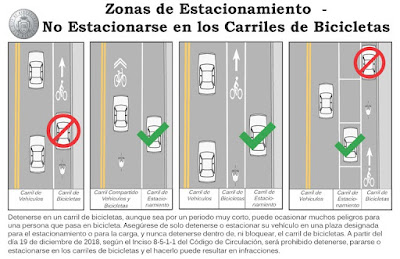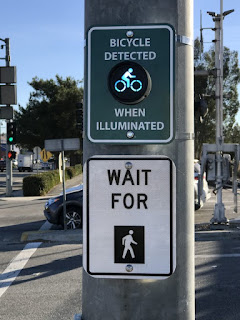Yesterday, I complained about boneheaded planners and inconsiderate (or just clueless) drivers. So, dear readers, I figured I'd give you a feel-good story today.
Owen Werner's mother is justly proud of him. The 11-year-old from Elk Rapids, Michigan learned that a man in nearby Kalkaska modifies bicycles for special-needs and low-income kids. So, Werner started a fundraiser in his school to help the man's work--and get those bikes to disabled and poor kids.
His efforts paid off, in the way he hoped--and in a way he didn't expect.
You see, Owen is one of the kids he was trying to help--although he wasn't thinking of himself when he started the fundraiser. But, apparently, someone else noticed--specifically, the owners of McLain Cycle and Fitness. They gave him a specially-modified bike for his needs: He has a condition that's kept his muscles and joints from developing normally.
In watching the video of him, I couldn't help but to remember someone I knew in high school. He walked and moved in a way similar to how Owen gets around. But he had the misfortune of growing up in a place and time where it was believed that kids with similar handicaps were incapable of any sort of physical activity. He was even left back a year because, in spite of having an otherwise-perfect academic record, he didn't pass Phys Ed.
Fortunately for him, he was extremely (almost frighteningly) smart and talented in all sorts of other ways. I have to wonder, though, what his life would have been like had he grown up now--or simply in some place with more forward-thinking people than my high school had in the mid-1970s.
Seeing Owen Werner also reminded me of something that I see in my work and everyday life: How often physical disability and poverty go hand-in-hand. If you go to any public housing complex, you will find disproportionate numbers of people, young and old, in wheelchairs and walkers, or who need other kinds of physical assistance. At number of them are, and have been, my students and have spent all or parts of their lives in "the projects".
There are, of course, several reasons for that. One is that the physical disability of a child can impoverish a family. Another is that disabled people, in spite of all of the technological and social advances of the past few decades, have much more difficulty finding employment, let alone anything that pays well. Moreover, a kid from a low-income background--or an adult who has trouble getting a job with a good insurance plan--might not get treatment that could keep a low-grade malady from turning into a crippling disability.
On a more positive note, I also couldn't help but to think of how versatile cycling is. Someone, I forget who, said that a bicycle (or tricycle) can be adapted to just about any physical disability besides blindness or deafness. And, of course, deaf and blind people can ride a tandem with a sighted or hearing "captain." (I know: I played that role on a few rides with blind riders.)
Somehow, though, I don't think anything is going to stop Owen from doing whatever he wants. Aleasha Witt, his mother, has every reason to be proud.
Owen Werner's mother is justly proud of him. The 11-year-old from Elk Rapids, Michigan learned that a man in nearby Kalkaska modifies bicycles for special-needs and low-income kids. So, Werner started a fundraiser in his school to help the man's work--and get those bikes to disabled and poor kids.
His efforts paid off, in the way he hoped--and in a way he didn't expect.
You see, Owen is one of the kids he was trying to help--although he wasn't thinking of himself when he started the fundraiser. But, apparently, someone else noticed--specifically, the owners of McLain Cycle and Fitness. They gave him a specially-modified bike for his needs: He has a condition that's kept his muscles and joints from developing normally.
 |
| Owen Werner |
In watching the video of him, I couldn't help but to remember someone I knew in high school. He walked and moved in a way similar to how Owen gets around. But he had the misfortune of growing up in a place and time where it was believed that kids with similar handicaps were incapable of any sort of physical activity. He was even left back a year because, in spite of having an otherwise-perfect academic record, he didn't pass Phys Ed.
Fortunately for him, he was extremely (almost frighteningly) smart and talented in all sorts of other ways. I have to wonder, though, what his life would have been like had he grown up now--or simply in some place with more forward-thinking people than my high school had in the mid-1970s.
Seeing Owen Werner also reminded me of something that I see in my work and everyday life: How often physical disability and poverty go hand-in-hand. If you go to any public housing complex, you will find disproportionate numbers of people, young and old, in wheelchairs and walkers, or who need other kinds of physical assistance. At number of them are, and have been, my students and have spent all or parts of their lives in "the projects".
There are, of course, several reasons for that. One is that the physical disability of a child can impoverish a family. Another is that disabled people, in spite of all of the technological and social advances of the past few decades, have much more difficulty finding employment, let alone anything that pays well. Moreover, a kid from a low-income background--or an adult who has trouble getting a job with a good insurance plan--might not get treatment that could keep a low-grade malady from turning into a crippling disability.
On a more positive note, I also couldn't help but to think of how versatile cycling is. Someone, I forget who, said that a bicycle (or tricycle) can be adapted to just about any physical disability besides blindness or deafness. And, of course, deaf and blind people can ride a tandem with a sighted or hearing "captain." (I know: I played that role on a few rides with blind riders.)
Somehow, though, I don't think anything is going to stop Owen from doing whatever he wants. Aleasha Witt, his mother, has every reason to be proud.


















